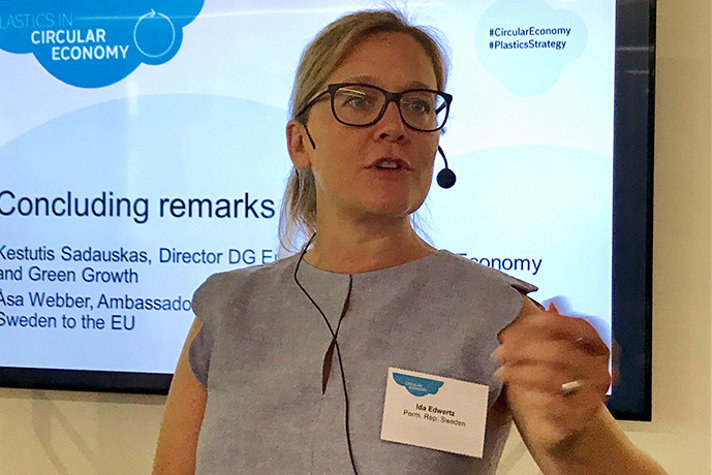Plastics in the Circular Economy
Published
Plastic is one of five priority areas in the EU Action plan for the Circular Economy. In a live streamed seminar the Confederations of Danish, Finnish and Swedish industry and other stakeholders discussed priorities for the EU Commission’s upcoming Strategy on Plastics.

- The idea behind the event Plastics in the Circular Economy was to contribute to the ongoing work on the Plastics Strategy by exploring different perspectives but also possible actions within the framework of the strategy, explains Ida Edwertz, Environment Counsellor in Brussels for the Swedish government.
Nordic participants from plastic and recycling industry as well as members of the European Parliament and the EU Commission presented their views on prevention, recycling, alternative materials and so called biodegradable plastics. Many raised the need for promotion of non-toxic material cycles and improved traceability resulting in higher quality of recycled material. There was agreement about the importance of design and innovation as well as on the development common standards and definitions.
- We know that all member states support a ban on micro plastics in cosmetics being included in the strategy, but the Swedish Government has also stressed the need to address the extensive use of “unnecessary” plastics in the strategy. Therefore, it’s very positive that a clear message from the discussions today is that prevention must be comprised, says Ida Edwertz.
The seminar was organised by the Danish, Finnish and Swedish EU-representations and the Confederations of Danish, Finnish and Swedish industry.
Live stream of the Seminar
More about the EU Strategy on Plastics in a Circular Economy
Some facts on plastic
Plastic is a versatile, inexpensive and durable material that can be used to make everything from airplane components to packaging. The plastic consumption in the EU has increased from approximately 100 kilos per capita in 2005 to 140 kilos per capita in 2015.
If current trends continue, by 2050 new plastics will consume 20 percent of all oil production, up from an estimated five percent today, and give rise to 15 percent of the global annual carbon emissions.
Only 30 percent of the plastic waste generated in the EU in 2014 was recycled.
Globally, 5-13 million tons of plastic waste ends up in the ocean every year. Marine litter is considered to be one of the main threats to marine biodiversity.

 X
X